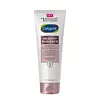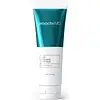What's inside
What's inside
 Key Ingredients
Key Ingredients

 Benefits
Benefits

 Concerns
Concerns

 Ingredients Side-by-side
Ingredients Side-by-side

Water
Skin ConditioningGlycerin
HumectantCocamidopropyl Betaine
CleansingGluconolactone
Skin ConditioningNiacinamide
SmoothingSodium Methyl Cocoyl Taurate
CleansingPEG-120 Methyl Glucose Trioleate
CleansingSodium Lauroyl Methyl Isethionate
CleansingSodium Chloride
MaskingDi-PPG-2 Myreth-10 Adipate
EmollientSodium Benzoate
MaskingPEG-150 Distearate
EmulsifyingSodium Methyl Oleoyl Taurate
CleansingSodium Cocoyl Isethionate
CleansingPropanediol
SolventCoconut Acid
CleansingAlcohol
AntimicrobialSodium Hydroxide
BufferingAchillea Millefolium Flower/Leaf/Stem Extract
Skin ConditioningTrisodium Ethylenediamine Disuccinate
Malva Sylvestris Flower/Leaf/Stem Extract
Skin ConditioningMelissa Officinalis Leaf Extract
Skin ConditioningMentha Piperita Leaf Extract
Skin ConditioningPrimula Veris Flower Extract
Skin ConditioningAlchemilla Vulgaris Flower/Leaf/Stem Extract
AstringentVeronica Officinalis Flower/Leaf/Stem Extract
AstringentBHA
AntioxidantWater, Glycerin, Cocamidopropyl Betaine, Gluconolactone, Niacinamide, Sodium Methyl Cocoyl Taurate, PEG-120 Methyl Glucose Trioleate, Sodium Lauroyl Methyl Isethionate, Sodium Chloride, Di-PPG-2 Myreth-10 Adipate, Sodium Benzoate, PEG-150 Distearate, Sodium Methyl Oleoyl Taurate, Sodium Cocoyl Isethionate, Propanediol, Coconut Acid, Alcohol, Sodium Hydroxide, Achillea Millefolium Flower/Leaf/Stem Extract, Trisodium Ethylenediamine Disuccinate, Malva Sylvestris Flower/Leaf/Stem Extract, Melissa Officinalis Leaf Extract, Mentha Piperita Leaf Extract, Primula Veris Flower Extract, Alchemilla Vulgaris Flower/Leaf/Stem Extract, Veronica Officinalis Flower/Leaf/Stem Extract, BHA
Water
Skin ConditioningCocamidopropyl Betaine
CleansingDistearyl Phthalic Acid Amide
EmollientSynthetic Wax
AbrasiveStearyl Alcohol
EmollientCetyl Alcohol
EmollientJojoba Esters
EmollientSodium Chloride
MaskingSodium Methyl Cocoyl Taurate
CleansingCitric Acid
BufferingAloe Barbadensis Leaf Juice
Skin ConditioningCamellia Sinensis Leaf Extract
AntimicrobialCoconut Acid
CleansingMenthol
MaskingPEG-120 Methyl Glucose Dioleate
EmulsifyingCaprylyl Glycol
EmollientHexylene Glycol
EmulsifyingEthylhexylglycerin
Skin ConditioningAscorbic Acid
AntioxidantButylene Glycol
HumectantDisodium EDTA
Isopropyl Alcohol
SolventSodium Hydroxide
BufferingPhenoxyethanol
PreservativeSodium Benzoate
MaskingSodium Sulfite
PreservativePotassium Sorbate
PreservativeParfum
MaskingChromium Hydroxide Green
Water, Cocamidopropyl Betaine, Distearyl Phthalic Acid Amide, Synthetic Wax, Stearyl Alcohol, Cetyl Alcohol, Jojoba Esters, Sodium Chloride, Sodium Methyl Cocoyl Taurate, Citric Acid, Aloe Barbadensis Leaf Juice, Camellia Sinensis Leaf Extract, Coconut Acid, Menthol, PEG-120 Methyl Glucose Dioleate, Caprylyl Glycol, Hexylene Glycol, Ethylhexylglycerin, Ascorbic Acid, Butylene Glycol, Disodium EDTA, Isopropyl Alcohol, Sodium Hydroxide, Phenoxyethanol, Sodium Benzoate, Sodium Sulfite, Potassium Sorbate, Parfum, Chromium Hydroxide Green
Ingredients Explained
These ingredients are found in both products.
Ingredients higher up in an ingredient list are typically present in a larger amount.
Cocamidopropyl Betaine is a fatty acid created by mixing similar compounds in coconut oil and dimethylaminopropylamine, a compound with two amino groups.
This ingredient is a surfactant and cleanser. It helps gather the dirt, pollutants, and other impurities in your skin to be washed away. It also helps thicken a product and make the texture more creamy.
Being created from coconut oil means Cocamidopropyl Betaine is hydrating for the skin.
While Cocamidopropyl Betaine was believed to be an allergen, a study from 2012 disproved this. It found two compounds in unpure Cocamidopropyl Betaine to be the irritants: aminoamide and 3-dimethylaminopropylamine. High-grade and pure Cocamidopropyl Betaine did not induce allergic reactions during this study.
Learn more about Cocamidopropyl BetaineCoconut Acid isn't fungal acne safe.
Sodium Benzoate is a preservative. It's used in both cosmetic and food products to inhibit the growth of mold and bacteria. It is typically produced synthetically.
Both the US FDA and EU Health Committee have approved the use of sodium benzoate. In the US, levels of 0.1% (of the total product) are allowed.
Sodium benzoate works as a preservative by inhibiting the growth of bacteria inside of cells. It prevents the cell from fermenting a type of sugar using an enzyme called phosphofructokinase.
It is the salt of benzoic acid. Foods containing sodium benzoate include soda, salad dressings, condiments, fruit juices, wines, and snack foods.
Studies for using ascorbic acid and sodium benzoate in cosmetics are lacking, especially in skincare routines with multiple steps.
We always recommend speaking with a professional, such as a dermatologist, if you have any concerns.
Learn more about Sodium BenzoateChances are, you eat sodium chloride every day. Sodium Chloride is also known as table salt.
This ingredient has many purposes in skincare: thickener, emulsifier, and exfoliator.
You'll most likely find this ingredient in cleansers where it is used to create a gel-like texture. As an emulsifier, it also prevents ingredients from separating.
There is much debate on whether this ingredient is comedogenic. The short answer - comedogenic ratings don't tell the whole story. Learn more about comegodenic ratings here.
The concensus about this ingredient causing acne seems to be divided. Research is needed to understand if this ingredient does cause acne.
Scrubs may use salt as the primary exfoliating ingredient.
Learn more about Sodium ChlorideSodium Hydroxide is also known as lye or caustic soda. It is used to adjust the pH of products; many ingredients require a specific pH to be effective.
In small amounts, sodium hydroxide is considered safe to use. However, large amounts may cause chemical burns due to its high alkaline.
Your skin has a natural pH and acid mantle. This acid mantle helps prevent harmful bacteria from breaking through. The acid mantle also helps keep your skin hydrated.
"Alkaline" refers to a high pH level. A low pH level would be considered acidic.
Learn more about Sodium HydroxideThis gentle cleansing and foaming ingredient is known for leaving a smooth feeling in skin and hair. It is made using coconut oil.
According to the manufacturer, it is soluble in water and has resistance to hard water, acid, and alkali.
Due to its coconut base, it may not be Malassezia folliculitis safe.
Learn more about Sodium Methyl Cocoyl TaurateWater. It's the most common cosmetic ingredient of all. You'll usually see it at the top of ingredient lists, meaning that it makes up the largest part of the product.
So why is it so popular? Water most often acts as a solvent - this means that it helps dissolve other ingredients into the formulation.
You'll also recognize water as that liquid we all need to stay alive. If you see this, drink a glass of water. Stay hydrated!
Learn more about Water